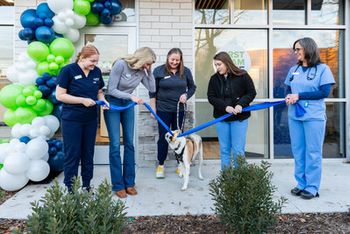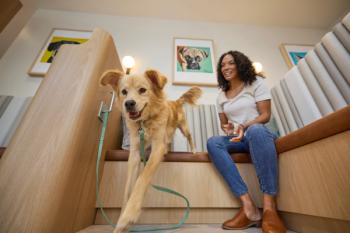
Handling heat and humidity
You want to build a safe, comfortable work environment. Not too hot. Not too cold. Here's how to make sure your facility is "just right."
Temperature and humidity vary within an environment due to transient and constant factors. Constant factors include solar loads, building materials, and lighting. Transient factors vary between rooms.
For example, in the runs the heat load varies depending on how many animals you're housing, the heat they release, how often you wash the floor, and so on. In surgery, the equipment and lighting generate a significant load. In treatment rooms, the number of animals, and the rate at which you exhaust air affect the heat load. Here's a look at the best temperature and relative humidity set-points for different areas of your practice. (See Table 1 for a summary.)
- The treatment room is one of your busiest areas, and a central location and open plan often make it challenging to control the environment. Ideally, treatment rooms stay within 74 to 76 degrees Fahrenheit and 50 percent to 60 percent relative humidity. Of course, animals in surgery and recovering from anesthesia require elevated environmental temperatures, typically 81 to 84 degrees Fahrenheit. And newborn puppies and kittens need to be housed in environments with temperatures between 85 to 90 degrees Fahrenheit for the first week after birth.
- You should try to keep laboratories, radiology areas, pharmacies, and surgery scrub rooms between 72 and 74 degrees Fahrenheit at 50 percent to 60 percent relative humidity.
- A surgery room requires lower temperature set points because of the high heat load generated by the operating lights and other equipment. The room should be kept at 63 to 66 degrees Fahrenheit and 35 percent to 45 percent relative humidity. You might need a humidifier to avoid static discharges when conditions get very dry.
- Strive to maintain dog and cat runs between 64 and 84 degrees Fahrenheit and relative humidity of 30 percent to 70 percent. And keep in mind, four hours below 45 or above 85 degrees Fahrenheit could be life threatening. So think about what you'd do in an emergency that might affect your normal temperature control systems.
The economics of larger boarding facilities usually dictate only heating and ventilation. In these situations, the exhaust fan is the only means of controlling temperature buildup in the space.
Install at least one additional exhaust fan to use when the space temperature exceeds 85 degrees Fahrenheit. The same fan can help you dry newly washed floors in dog runs to reduce humidity buildup.
Ramzi Namek, PE, is a Senior Mechanical Engineer at RTKL Associates Inc. in Washington, DC.
Newsletter
From exam room tips to practice management insights, get trusted veterinary news delivered straight to your inbox—subscribe to dvm360.




